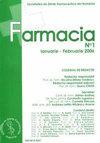POLYPHENOL QUANTIFICATION ON DIPSACUS LACINIATUS AND ARMORACIA RUSTICANA FROM ROMANIAN FLORA
IF 1.3
4区 医学
Q4 PHARMACOLOGY & PHARMACY
引用次数: 0
Abstract
In recent years, the polyphenolic compounds profile of plants has been intensively studied. These compounds protect the body against oxidative stress and certain diseases such as diabetes and cancer, where the antioxidant efficiency of the defence system is low. The plant material (harvested from Romania) was analysed for polyphenols and flavonoids using thin layer chromatography (TLC) and high-performance liquid chromatography (HPLC) coupled with photo diode array and mass spectrometer. The polyphenols/flavonoids (caffeic acid, chlorogenic acid, p -coumaric acid, protocatechuic acid, rutin and quercetin) were identified and quantified in different part of the plants (flower, leaf, stem and roots for Dipsacus laciniatus and both roots and leaves for Armoracia rusticana ). The least amount of polyphenols were found to be as expected in the root part of Dipsacus laciniatus. This was also sustained by the further UHPLC-MS analysis. The results revealed that the flower extract has the highest radical scavenging activity with 87.43% followed by the leaf extract with 86.63%, the stem extract with 83.54% and the root extract with 78.17%. Higher concentrations of p-Coumaric acid and ferulic acid were identified in the Armoracia rusticana samples whereas the Dipsacus laciniatus samples contained higher concentrations of both protocatechuic acid and chlorogenic acid. The results of the present study revealed that the methanolic extracts of both Dipsacus laciniatus and Armoracia rusticana , can be considered an effective source of antioxidant compounds.对罗马尼亚植物区系中的 Dipsacus laciniatus 和 armoracia rusticana 进行多酚定量分析
近年来,人们对植物中的多酚化合物进行了深入研究。这些化合物能保护人体免受氧化压力和某些疾病(如糖尿病和癌症)的侵害,因为在这些疾病中,人体防御系统的抗氧化效率较低。使用薄层色谱法(TLC)和高效液相色谱法(HPLC)结合光电二极管阵列和质谱仪分析了植物材料(采自罗马尼亚)中的多酚和类黄酮。对植物不同部位(Dipsacus laciniatus 的花、叶、茎和根,Armoracia rusticana 的根和叶)的多酚/类黄酮(咖啡酸、绿原酸、对香豆酸、原儿茶酸、芦丁和槲皮素)进行了鉴定和定量。如预期的那样,在 Dipsacus laciniatus 的根部发现的多酚含量最少。进一步的 UHPLC-MS 分析也证实了这一点。结果显示,花提取物的自由基清除活性最高,达到 87.43%,其次是叶提取物的 86.63%、茎提取物的 83.54%和根提取物的 78.17%。在 Armoracia rusticana 样品中发现了较高浓度的对香豆酸和阿魏酸,而在 Dipsacus laciniatus 样品中则发现了较高浓度的原儿茶酸和绿原酸。本研究的结果表明,钝角苣苔和刺五加的甲醇提取物可被视为抗氧化化合物的有效来源。
本文章由计算机程序翻译,如有差异,请以英文原文为准。
求助全文
约1分钟内获得全文
求助全文
来源期刊

FARMACIA
医学-药学
CiteScore
2.40
自引率
50.00%
发文量
59
审稿时长
6-12 weeks
期刊介绍:
FARMACIA publishes original research papers, invited topical reviews and editorial commentaries and news, with emphasis on conceptual novelty and scientific quality. Main research areas are focused on: pharmacology, toxicology, medicinal chemistry, biopharmacy, drug design, drug delivery, personalized medicine, nanostructures, nutraceuticals, biochemistry and biotechnology. Manuscripts submitted to the Journal are only accepted after the peer review precess. The papers should have not been published in any other journal. The recommendations of the Declaration of Helsinki, for humans, and the International guidelines as accepted principles for the use of experimental animals should be followed.
 求助内容:
求助内容: 应助结果提醒方式:
应助结果提醒方式:


